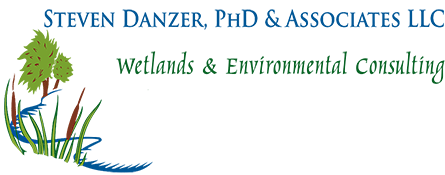What are Wetlands or Watercourses?
In Connecticut, “Inland Wetlands” are defined by state and local law by soil type. Inland Wetlands have either “poorly drained soils” or “very poorly drained soils.” “Watercourses” are defined by state and local law as having “floodplain” or “alluvial” soils, and, to some extent, by their unique hydrology. The soil terms are technical classifications made by a Soil Scientist.
The presence of a wetland on your property may seem obvious, but the only reliable way of establishing the wetland area is through soil testing and evaluation by a credentialed Soil Scientist.
Why do I need a Soil Scientist? (Isn't the town wetland map enough?)
Under state and local law, only a Soil Scientist can determine the precise boundary of an inland wetland.
Most town halls in Connecticut have local wetland maps of some sort available to the general public, but the maps are often outdated and imprecise. For that reason towns often require property owners to provide an updated document from a credentialed Soil Scientist to ascertain the wetland status of the property before the local officials can sign off on a permit. A credentialed Soil Scientist can perform a wetland survey and issue a document that allows you to apply for a land-use permit in your town.
How do I know if I have Wetlands or Watercourses on my property?
Under the state and local law, only a Soil Scientist can determine the presence of an inland wetland or a watercourse.
Why is it important to know if there are Wetlands or Watercourses on my property? (Why do I care?)
All towns and cities in Connecticut have local wetland regulations (patterned closely after the state regulations) that require knowing the distance between the wetland area and the proposed site of the building or improvement.
It is important to know if you have wetlands on your property and where they begin and end. Only a credentialed Soil Scientist can perform a wetland survey to find this out.
Once you know where the wetlands are, and if you have a project in mind, you can then begin to answer these next questions: Will your project have an impact? What are the types and size of the impact? Are there ways to avoid or minimize these impacts? You local Town also requires this information before you can obtain a permit. An experienced consultant can help you answer these questions in a concise and professional manner.
What is involved in a typical survey for wetlands?
Typically a Soil Scientist will visit the property and take soil samples using a special probe (an augur). The Soil Scientist will determine whether or not the soils meet the state definitions. If a wetland or watercourse is determined to be present, the Soil Scientist will typically mark the actual wetland/watercourse boundary for the property owner in preparation for a land surveyor, if needed.
A written report will be issued documenting the presence or absence of the wetlands and the relevant soil types located on the property. This document will be presented to the client. The client can then submit this document to the local town government as part of the permitting process and/or use this report as an aid in the planning for the site.
